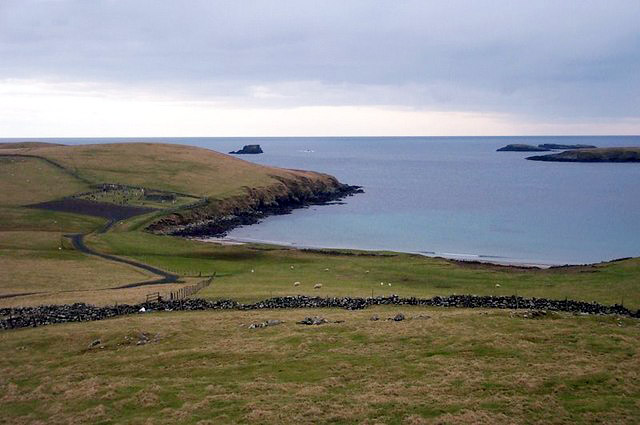![]()
![]()
Shetland (Unst) 1970.
SHETLAND (UNST) EXPEDITION 1970
Leader: Dave Vigar
Richard Jeavons, Mike Jeavons, Gary Chidwick, Roger Dean, Allan Deery, Neil Forsyth,
Paul Bracey, Nigel Tooke, David Mark, David Purves, Gwyn Jones, Jeremy Cook, Ian Goddard
LEADER'S REPORT
Few people appreciate how far away is Shetland. On maps it generally appears as an inset; on television weather forecasts it is generally off the screen. However, the S.H.S. never does anything by halves, and having decided on an Expedition to Shetland, it was then decided to head for Unst, the most northerly island. The party met in Aberdeen. Amazingly, there was only one absentee (who had last been heard of a month since in Morocco), and the rest of us were faced with a ten-hour boat journey from Aberdeen to Lerwick followed by a four-hour boat journey from Lerwick to Vyeasound.
For the majority of people living in an urban environment, places like the Hebrides and Shetland offer a complete contrast. I was very much aware of this, landing at Vyeasound. One immediately experienced a feeling of more space, more time, more 'elbow-room', and I welcomed the opportunity of this new situation, not only for the contrast but also for the chance of a peaceful reflection on life in general.
|
Our camp-site was at Lund, in the south-west of the island. This site was recommended by last year's Shetland reconnaissance Expedition, and in itself was an extremely good recommendation. Lund is a fine bay, where the Norsemen drew up their longships a thousand years ago, and where, until very recently, fishing boats of all nationalities took refuge from rough seas. Nowadays, the community around Lund is only a shadow of its former strength, with many croft houses empty, and after a few days there one realised that a crofting reorganisation scheme will ultimately be essential if this district, rich in agricultural potential, by Shetland standards, is to survive. Having set up the camp, we set about exploring the island. Unst provides ample opportunity for geographical botanical and ornithological activities, not to mention the abundance of archaeological remains, many of which have never been excavated. However, after a while, it became apparent that most of the interesting things, especially in the botanical field, were in the north end of the island and it would be well to bear this in mind when selecting a campsite for a future expedition.
|
 |

View over Lunda Wick. The remains of the house of Hamar are just visible in the foreground and St Olaf's Churchyard is beside the bay on the left. 21/01/2001
© Copyright Mike Pennington |
I was personally most interested in the prospects Unst's future. One got the feeling that in the past few the island has put much faith in the future of the R A F camp at Saxavord. The reasons for this are obvious - benefits include electricity from the Camp's generators, employment of islanders on the Camp, dental treatment, availability of fire fighting equipment, etc. But one also could perceive a change in this attitude a realisation that, at the whim of the Government, defence policy can change overnight and the Camp could be no more, and hence a realisation that the island must look to itself as insurance for the future. Local initiative is at the forefront. Many re-seeded areas are increasing agricultural production, and there is much more scope for expansion in this respect. Old crafts are being revived; there is a knitwear factory and a boat-building yard; the export of talc has risen to 10,000 tons a year, and fishing is also increasing rapidly. So, all in all, one cannot be unhopeful for the economic future of Unst. |
| However, whatever the future holds for Unst, we may rest assured that there will always be a welcome reception for the Schools Hebridean Society. The local people were extremely helpful and friendly and everywhere we were able to remark on their warm personality and conviviality. We were all disappointed that our two weeks in Unst seemed all too short, and I, for one, very much look forward to returning. |
|
|
The Belmont ferry terminal, Unst. 17/05/1992
© Copyright Martin Southwood |
- DAVE VIGAR